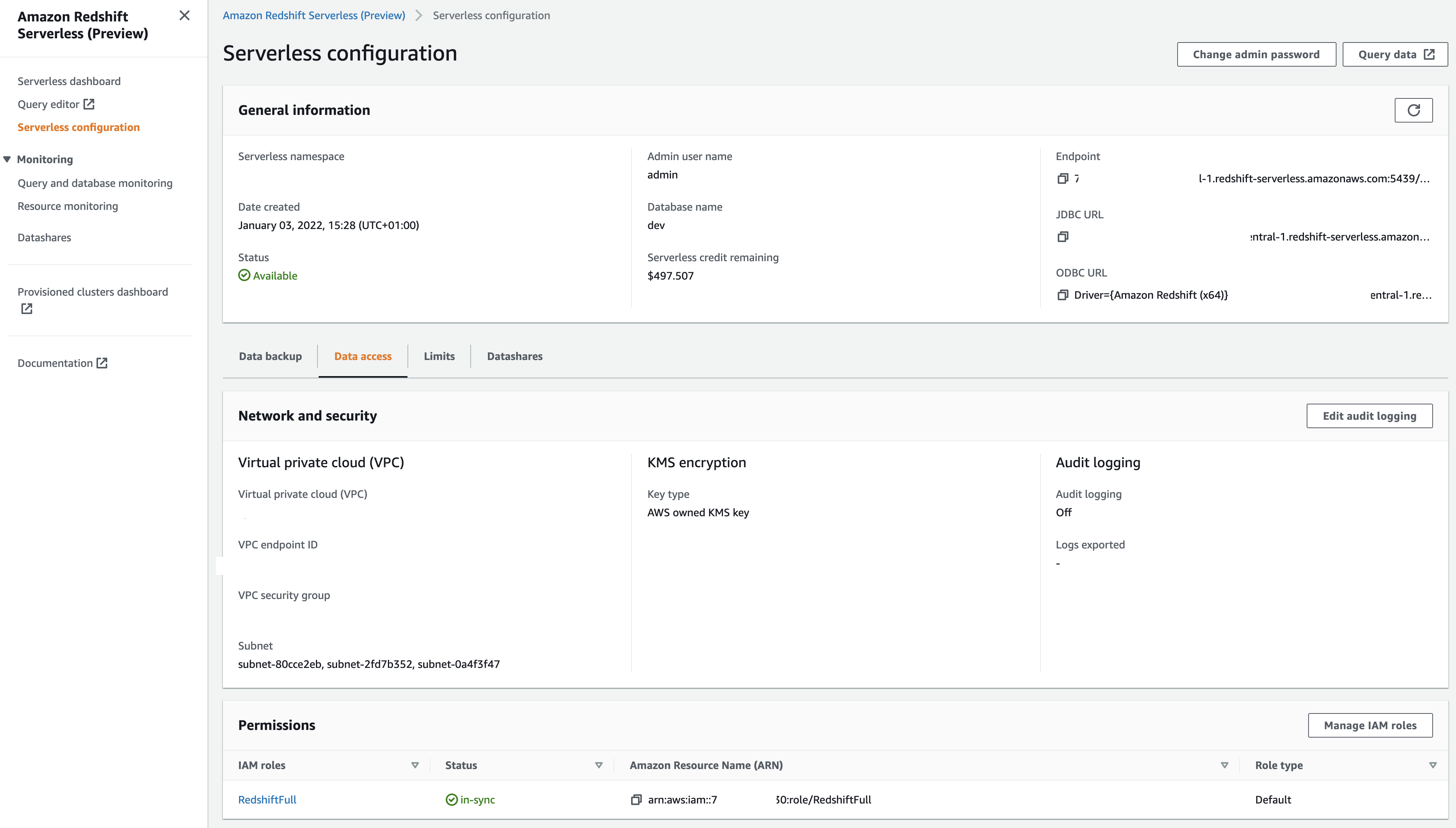I've created a serverless Redshift instance, and I'm trying to import a CSV file from an S3 bucket.
I've made an IAM role with full Redshift + Redshift serverless access and S3 Read access, and added this role as a Default Role under the Permissions settings of the Serverless Configuration. Basically, I've tried to do anything that I thought should be necessary according to the documentation.
However, there docs are only targeted at the normal EC2 hosted Redshift for now, and not for the Serverless edition, so there might be something that I've overlooked.
But when I try running a COPY command (generated by the UI), I get this error:
ERROR: Not authorized to get credentials of role arn:aws:iam::0000000000:role/RedshiftFull Detail: ----------------------------------------------- error: Not authorized to get credentials of role arn:aws:iam::00000000:role/RedshiftFull code: 30000 context: query: 18139 location: xen_aws_credentials_mgr.cpp:402 process: padbmaster [pid=8791] ----------------------------------------------- [ErrorId: 1-61dc479b-570a4e96449b228552f2c911]
Here's the command I'm trying to run:
COPY dev."test-schema"."transactions" FROM 's3://bucket-name/something-1_2021-11-01T00_00_00.000Z_2022-01-03.csv' IAM_ROLE 'arn:aws:iam::0000000:role/RedshiftFull' FORMAT AS CSV DELIMITER ',' QUOTE '"' REGION AS 'eu-central-1'
Here's the Role
{
"Role": {
"Path": "/",
"RoleName": "RedshiftFull",
"RoleId": "AROA2PAMxxxxxxx",
"Arn": "arn:aws:iam::000000000:role/RedshiftFull",
"CreateDate": "2022-01-10T13:55:03+00:00",
"AssumeRolePolicyDocument": {
"Version": "2012-10-17",
"Statement": [
{
"Effect": "Allow",
"Principal": {
"Service": [
"redshift.amazonaws.com",
"sagemaker.amazonaws.com"
]
},
"Action": "sts:AssumeRole"
}
]
},
"Description": "Allows Redshift clusters to call AWS services on your behalf.",
"MaxSessionDuration": 3600,
"RoleLastUsed": {}
}
}
{
"AttachedPolicies": [
{
"PolicyName": "redshift-serverless",
"PolicyArn": "arn:aws:iam::719432241830:policy/redshift-serverless"
},
{
"PolicyName": "AmazonRedshiftFullAccess",
"PolicyArn": "arn:aws:iam::aws:policy/AmazonRedshiftFullAccess"
},
{
"PolicyName": "AmazonS3ReadOnlyAccess",
"PolicyArn": "arn:aws:iam::aws:policy/AmazonS3ReadOnlyAccess"
}
]
}
The redshift-serverless policy is here:
{
"Version": "2012-10-17",
"Statement": [
{
"Effect": "Allow",
"Action": "redshift-serverless:*",
"Resource": "*"
}
]
}


iam:PassRolepermissions to specify the IAM Role to be used? Do you haveiam:*permissions? (This is just a guess -- I haven't used Redshift Serverless.) – Jalaparedshift-serverless.amazonaws.comto the Trusted Entities, with no luck. – Drastic